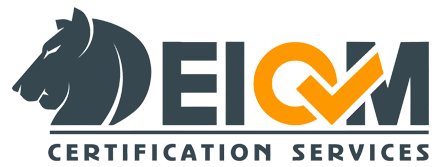ISO 15189 is a globally recognized standard that outlines the requirements for quality and competence in medical laboratories. It provides a framework for laboratories to establish and maintain effective quality management systems, ensuring the accuracy, reliability, and timeliness of test results. By adhering to This standard, laboratories demonstrate their commitment to delivering quality healthcare services.
Introduction
In the field of healthcare, accurate and reliable laboratory testing is essential for diagnosing, monitoring, and treating patients. ISO 15189, the international standard for medical laboratory quality, plays a vital role in ensuring that laboratories meet the highest standards of quality and competence. This article provides an in-depth understanding of This standard, its benefits, and the process of implementing this standard to achieve excellence in medical laboratory practices.
Benefits of Implementing
Implementing ISO 15189 brings numerous advantages to medical laboratories and the patients they serve.
- Enhanced Patient Care and Safety
ISO 15189 focuses on patient-centered care by emphasizing accuracy, reliability, and timeliness in laboratory testing. By implementing this standard, laboratories improve the quality of their services, leading to more accurate diagnoses, effective treatments, and better patient outcomes. It ensures that patients receive reliable and timely test results, enhancing the overall quality and safety of healthcare delivery.
- Improved Laboratory Processes and Efficiency
ISO 15189 guides laboratories in implementing robust quality management systems, which optimize processes, minimize errors, and enhance efficiency. Laboratories following 15189 experience streamlined workflows, reduced turnaround times, and improved resource utilization. This, in turn, leads to cost savings, increased productivity, and enhanced customer satisfaction.
- Global Recognition and Credibility
ISO 15189 accreditation is globally recognized as a mark of excellence in medical laboratory quality. Laboratories that achieve This standard accreditation gain international credibility, fostering trust among patients, healthcare professionals, and regulatory authorities. Accreditation demonstrates a laboratory’s commitment to meeting internationally recognized standards and ensures its compliance with best practices in the field.
Requirements of standard
ISO 15189 specifies two sets of requirements: management requirements and technical requirements.
- Management Requirements
The management requirements focus on the laboratory’s organization and management systems. They include defining the laboratory’s quality policy, establishing a quality manual, ensuring personnel competence, implementing risk management processes, and maintaining appropriate facilities and equipment. These requirements provide a strong foundation for effective quality management in medical laboratories.
- Technical Requirements
The technical requirements address the specific processes involved in laboratory testing. They encompass the selection and validation of methods, sample handling, analysis, result reporting, and quality control. Laboratories must ensure the accuracy and reliability of test results through adherence to these technical requirements.
Step-by-Step Guide
Implementing ISO 15189 involves several key steps to ensure a successful transition to the standard.
- Gap Analysis and Readiness Assessment
Begin by conducting a thorough gap analysis to assess the current state of your laboratory’s quality management system and identify areas that require improvement to meet 15189 requirements. This analysis helps create a roadmap for implementation.
- Documenting Policies and Procedures
Develop and document policies and procedures that align with ISO 15189 requirements. This includes defining quality objectives, documenting processes, and establishing procedures for managing non-conformities, equipment maintenance, and personnel competence.
- Competence and Training of Staff
Ensure that laboratory personnel have the necessary competence to perform their tasks effectively. Develop training programs to enhance their knowledge and skills in areas such as quality management, method validation, and quality control. Regularly assess and document staff competency.
- Internal Audits and Corrective Actions
Conduct internal audits to evaluate the effectiveness of your laboratory’s quality management system. Identify areas for improvement and take corrective actions to address any non-conformities or deviations from ISO 15189 requirements.
Achieving Accreditation
To achieve ISO 15189 accreditation, laboratories must select an appropriate accreditation body and undergo an assessment process. The accreditation body will evaluate the laboratory’s compliance with ISO 15189 requirements through a comprehensive assessment that includes document review, on-site inspections, and proficiency testing.
Integrating ISO 15189 with other Quality Management Systems
ISO 15189 can be integrated with other quality management systems, such as ISO 9001 (Quality Management System) and ISO 27001 (Information Security Management System). Integration helps streamline processes, reduce duplication of efforts, and enhance overall organizational efficiency.
Challenges and Solutions in ISO 15189 Implementation
Implementing ISO 15189 may pose certain challenges, but they can be overcome with careful planning and execution.
- Resource Allocation and Training
Allocating sufficient resources, including personnel, time, and financial investment, is crucial for successful implementation. Laboratories should prioritize training programs to ensure that staff members understand and can effectively implement 15189 requirements.
- Maintaining Documentation and Records
ISO 15189 places significant emphasis on documentation and record-keeping. Laboratories must establish systems for document control, record management, and data security to ensure compliance. Implementing digital solutions can simplify these processes and facilitate efficient record-keeping.
- Addressing Non-conformities
Identifying and addressing non-conformities is an essential part of ISO 15189 implementation. Laboratories should establish a robust corrective and preventive action process to address any deviations from the standard’s requirements and continually improve their quality management system.
Conclusion
ISO 15189 serves as the gold standard for medical laboratory quality, ensuring that laboratories adhere to rigorous quality management practices. By implementing This standard, laboratories enhance patient care, improve efficiency, and gain international recognition. The standard fosters a culture of continuous improvement, driving laboratories towards excellence in healthcare delivery.
Contact EIQM
To contact us, please fill out the form below. We will contact you as soon as possible. You can also apply through this form if you would like to receive system certification or representation of EIQM Certification Body.

